Has climbing Everest become more dangerous? If you only read the headlines after an accident, you would say yes. But the facts say no.
One measure is the number of deaths per summit. The facts are available through the Himalayan Database, research, Wikipedia and my personal observations and reports. All the numbers are very close approximations but accurate enough to reveal a trend.
For most of the 20th Century, Everest was the domain of professional climbers or heavily supported national expeditions. They took years to prepare and had extensive experience before attempting new or even the most straightforward routes.
In the 1990s, commercialization took off seeing over 100 summits in a single season for the first time in 1993. Guided expeditions became the norm as many professional climbers went on to pursue other 8000 meter mountains or new routes on unclimbed peaks.
With this migration, a logical assumption would have been to see the death rates soar as less experienced climbers took over Everest, however, just the opposite happened. Before I go on, note that historically Sherpas represent about 30% of the deaths on Everest primarily from falls and avalanches while fixing ropes.
With this, here is the bottom line: Everest actually became safer as the death per summit ratio dropped from 5.56% in the 1990s to 1.5% in the 2000’s. But statistics can be deceptive so lets look at the details.
Crowds and Deaths
Crowds are not new on Everest and neither are deaths in large numbers. There have been several years when the annual death toll on Everest exceeded 10: 1982: 11, 1988: 10, 1996: 15, 2006: 11 and 2012: 10.
The deaths have been spread across all types of climbing styles: large commercial teams, small private teams, independent climbers, with and without supplemental oxygen, low budget and high price expeditions. Also, while it is popular to place blame for deaths on crowds, this is rarely the root cause for a tragedy. With the exception of 1996, the largest western commercial operators appear to have the safest record as measured by number of deaths per summit.
In looking at the average annual death rate over three different periods, the story begins to reveal itself. Since the first attempt in 1922 there have been around 6,214 summits and 234 deaths with a median of 23 summits, 4 deaths per year for a 3.3% death to summit ratio.
Looking only at the 1990s when commercialization took off, there was a total of 882 summits and 59 total deaths. The annual numbers increased dramatically to median of 88 summits, 5 deaths per year for a 5.56% death to summit ratio. 15 Sherpas died during this period.
And if you look at the same numbers since 2000 there have been 5,048 summits and 69 total deaths, resulting in a startling annual median of 423 summits, 5 deaths per year for a 1.5% death to summit ratio. 13 Sherpas died during this period.
In other words, comparing the 1990s to the 2000’s there was a 5.7 times more summiters but only 1.2 times the number of deaths. Everest has become safer in the 21st century for climbers.
| Period | Summits | Deaths | Median Summits | Median Deaths | Death/Summit % |
| 1922-2012 | 6,214 | 234 | 23 | 4 | 3.2% |
| 1990-1999 | 882 | 59 | 88 | 5 | 5.56% |
| 2000-2012 | 5,048 | 69 | 423 | 5 | 1.50% |
Cause of Death
Working on the assumption that the approximate 5,000 summiters in recent years were mostly likely less experienced than the early pioneers, when we dig deeper into the cause of deaths over those two periods we can see the impact of less experienced climbers on the death toll.
Both periods have falls as the major cause of death but the number of altitude related deaths (HAPE, HACE, AMS, exhaustion) soared since 2000 which could imply that climbers with less experience at altitude took more chances and suffered the results.
It is common to see less experienced climbers pushing themselves into exhaustion, climbing in poor weather, refusing to turn around knowing their oxygen will run out or learning that altitude related illnesses are unpredictable and often unrecoverable. Sadly, many deaths since 2000 were avoidable.
| Cause of Death | 1990’s | 2000’s |
| Fall | 21 | 17 |
| Altitude* | 5 | 16 |
| Exhaustion | 5 | 10 |
| Avalanche | 7 | 7 |
| Exposure (frostbite) | 14 | 4 |
| Heart Attack | 2 | 5 |
| Unkown | 1 | 5 |
| Illness | 0 | 3 |
| Disappearance | 4 | 2 |
| 59 | 69 |
* High Altitude Pulmonary Odemea, High Altitude Cerebral Odemea, Acute Mountain Sickness
So why has Everest become safer?

Today, there are almost no new routes attempted on Everest, a major cause of death in the early days. 2013 is an exception with three teams attempting new routes. Over 95% of expeditions take one of two routes: Southeast Ridge or Northeast Ridge in modern times.. Those routes, mostly unchanged for almost 60 years, are well known, with the dangers identified and risks mitigated by avoiding dangerous terrain as much as possible.
In some sections bolts have been installed to anchor the fixed ropes. This makes the route more stable and reduces the time Sherpas spend installing the fixed line. That said, avalanches still occur, and climbers still fall into crevasses. The Khumbu Icefall remains a treacherous section as does the entire summit night on both sides of Everest, particularly on the descent.
The climbing gear has improved dramatically since the early days of heavy wool, poplin outwear and hemp ropes. Modern sunglasses protect eyes better. Full down suits protect climbers from -40F wind chills. The overall gear is lighter thus reducing the wear on climbers. Improved boots and gloves prevent most frostbite but it still happens, most often to those climbing too slowly, in extreme weather or those climbing without supplemental oxygen. The death toll from exposure and frostbite is a third today than a decade ago.
Oxygen delivery has also seen major advances. The original masks used a bladder system, was loose fitting and very uncomfortable. Today, the model made by TopOut is the standard providing a comfortable and reliable delivery system with few leaks. Supplemental oxygen keeps the body warmer and has an estimated altitude effect of 1000m. However, risks still exists with frozen regulators, ice in the masks and tanks not filled to capacity as expected.
Understanding weather patterns has also contributed in lowering the death toll. The surprise storm in 1996 was cited as a major reason for the large death count that year. Today, weather forecasters have access to multiple models, weather satellites and decades of history thus lowering weather surprises. But once again, surprises still happen as weather forecasting for Everest is far from a perfect science.
The advent of commercial teams have provided an unprecedented ratio of Sherpas to western climbers thus improving safety in most cases. Today it is rare not to climb to the summit with a Sherpa by your side, in some cases two. They carry extra regulators, oxygen bottles and assist the climbers in swapping bottles. It is fair to say most Everest climbers would not summit, and some not survive, without the help of the Sherpas.
This extra support has become a placebo for some aspiring climbers believing they will be safe no matter what happens. In earlier times, climbers came to Everest fully self sufficient to climb without Sherpa support. They were able to care for themselves in case of an accident or unforeseen event. This new dependency has impacted the death toll in my view.
Has Everest Become Easier to Climb?
A common question and one that often receives a dismissive answer quoting the large number of climbers who summit each year.
My quick answer is that Everest is easier today than 30 years ago due to better gear, and improvements in support but it is still hard, damn hard.
However, looking at the big picture, not much has changed. Fixed lines have been used for decades. The weather is just as bad today and in some years, worse. The terrain and the altitude of course remain unchanged. All this conspires to drain climbers of every ounce of strength with each step higher.
On a personal observation, when I look back at my first attempt in 2002 as compared to my summit in 2011, not much changed. I used most of the same gear , and followed the same route. The largest on-mountain differences for me were a dramatically improved oxygen system and outstanding Sherpa support.
Classifying Everest
One measure of climbing difficulty is the rating and climbing has a terminology of it’s own. I have seen Everest described as a simple “walk-up” meaning that no actual climbing is involved so I thought a quick review of what defines climbing might be helpful. I will use the South Col route as the example but obviously with other routes, you can experience much more difficult terrain.
One point to keep in mind that the base definition of “technical” in an alpine setting often means that climbers must use crampons and an ice axe. This implies skills with snow travel, crevasse rescue and self-arrest techniques – all of which are needed for a safe Everest climb from base camp to the summit and back. There are many ways of grading climbs but I used the Yosemite Decimal System (YDS) since many people are familiar with it. However using the Alpine Grade might be more beneficial. I will discuss this at the end.
A final preamble item, one word: altitude. This makes all the difference and more complicated with snow and ice. Walking on flat ground at 20,000′ is vastly different than walking on flat ground at sea level – obviously. Please keep this in mind as you read these descriptions relative to Everest.
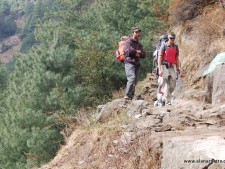
Class 1:
Trail hiking. Mostly groomed trails that are easy to find in the summer and relatively smooth. You walk upright without using your hands for balance. It can be a little steep at times.
The trek to Everest Base Camp is mostly class 1 intermixed with brief class 2 sections.

Class 2:
Simple off-trail hiking. Some scrambling may be required on the route with an occasional use of the hands for balance. Down climbing is straightforward.
Kala Patar at 18,192′ (remember altitude) would be a class 2 route with some scrambling required near the summit using hands for balance.
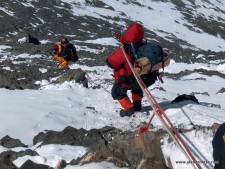
Class 3:
This is actual “climbing” since you frequently scramble using your hands. Handholds are easy to find. You can down climb facing out from the route.
This picture show climbers at the top of the Geneva Spur at 26,200′ using the fixed rope. Some of the route from Camp 2 at the base of the Lhotse Face to the South Summit is class 3 but mostly class 2 via the fixed ropes.
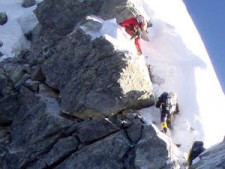
Class 4:
Simple climbing, with exposure. You must look for handholds and test them that they will hold you before using. You use your upper body muscles. A rope is often used for down climbing (rappelling or abseiling). Falls may result in serious injury or even death.
Climbing a ladder is considered class 4. Some climbers feel that class 4 is really entry class 5. Confused yet?
I would rate the Khumbu Icefall overall as class 4 due to the crevasse danger and the need to use hands and feet on ladders and climbing over ice formations. However, a large part of the Icefall is on somewhat smooth terrain which would be rated class 2, however at 19,000′. Remember the most difficult section drives the overall rating.
Sections of the Southeast Ridge, Lhotse Face and Cornice Traverse would be class 4 due to the exposure. The Hillary Step is class 4 at 28,740′.
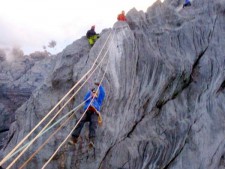
Class 5:
True technical climbing normally using ropes, carabiners, anchors (protection), harness, etc. Climbers often belay one another. In the winter you use an ice axe and crampons. There are sub-ratings for class 5 ranging from 5.0 for “easy” climbs with frequent hand and foot holds to 5.13 that has smooth surfaces, narrow cracks and vertical rock on an overhang.
With the route fixed, almost none of the South Col route meets these definitions even though an axe and crampons are used. However, obviously, there are much more difficult routes on Everest that significantly exceed the South Col and Northeast Ridge difficulty.
All of this discussion uses the Yosemite Decimal System which was designed primarily for rock climbing. There are other systems for alpine climbing, ice climbing and alternative rating systems from the European rating system and the Alaskan rating system. See this link for more information.
So no matter how you rate Everest, it is a lot of fun and test all a climber’s skills. This video shows me rappelling in the Khumbu Icefall in 2008.
Climb On!
Alan
Memories are Everything

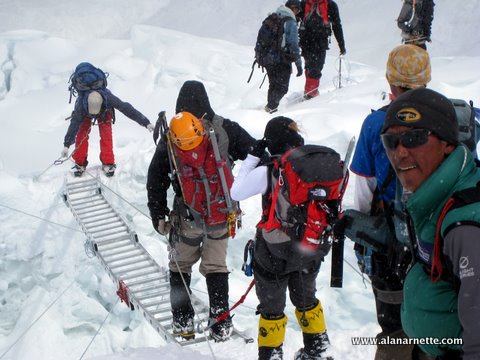

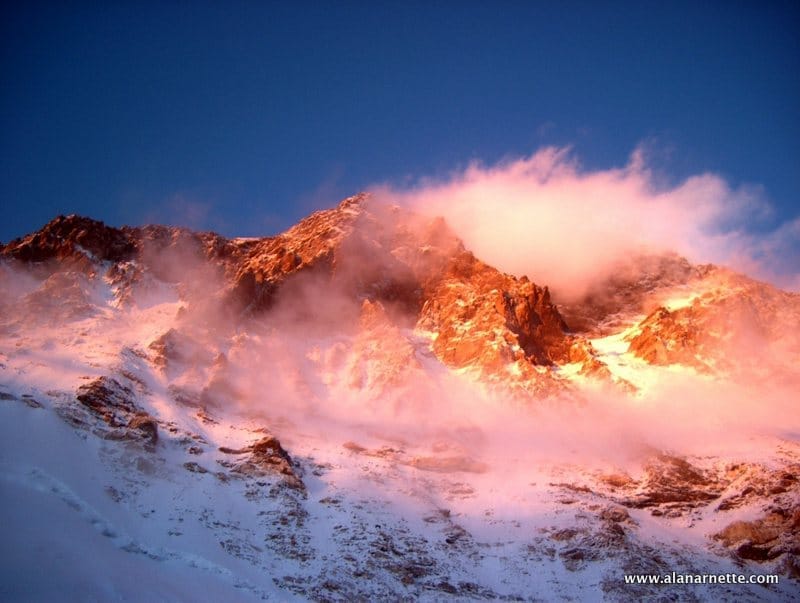
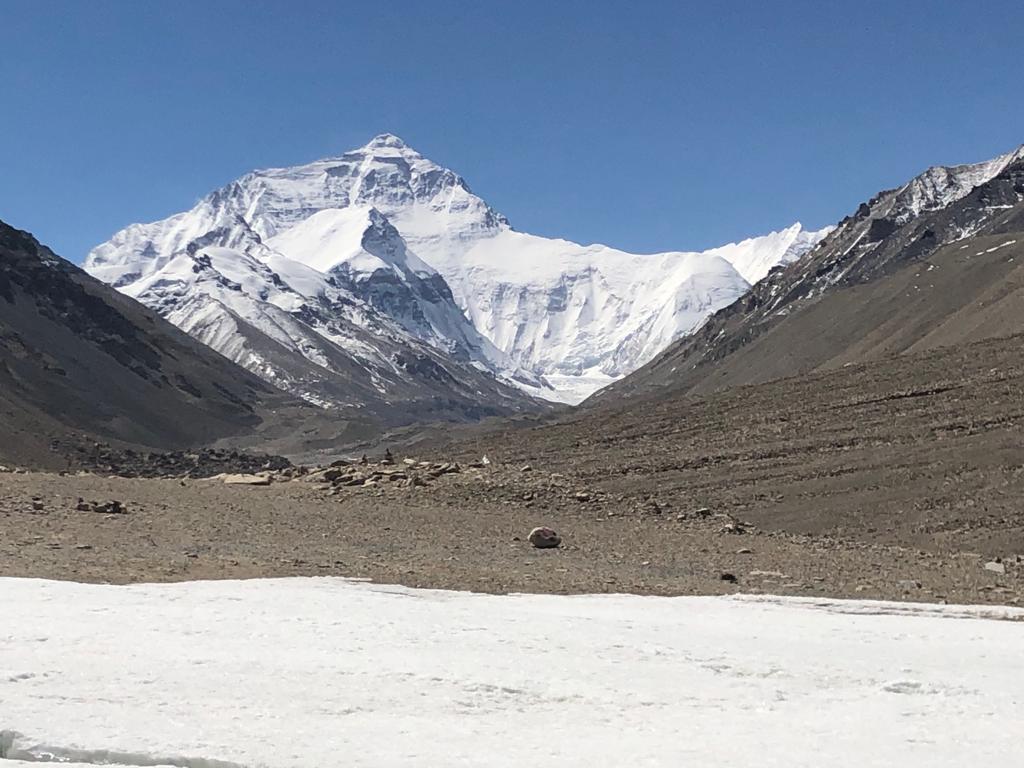
5 thoughts on “Everest 2013: Has Everest Become More Dangerous?”
i always look forward to your website as we head towards spring. i am a climber but with no desire to do
8000m. i like the stories and interviews and your “i’m here” perspective. thank you. -p
Thanks, Alan –informative & useful info.
Dr MCS
Very informative. Thanks Alan.
GOOD READ (Y)
Awesome. I hope this puts to rest that 1 in 10 ‘stat’ that is quoted ad nauseam.
Comments are closed.